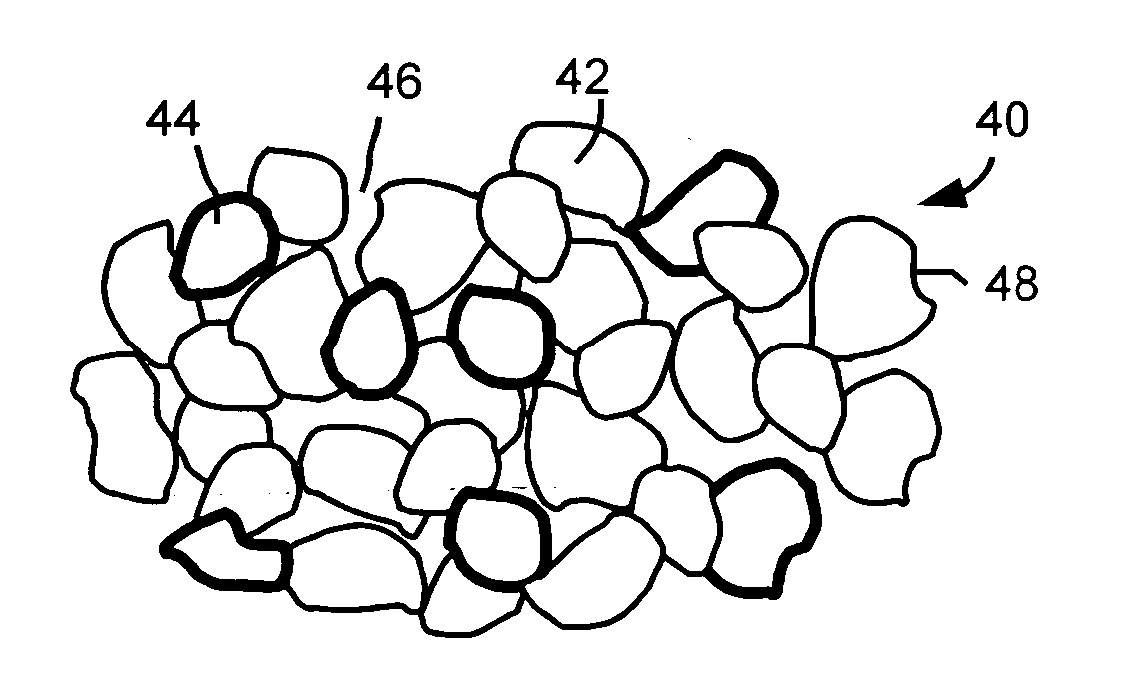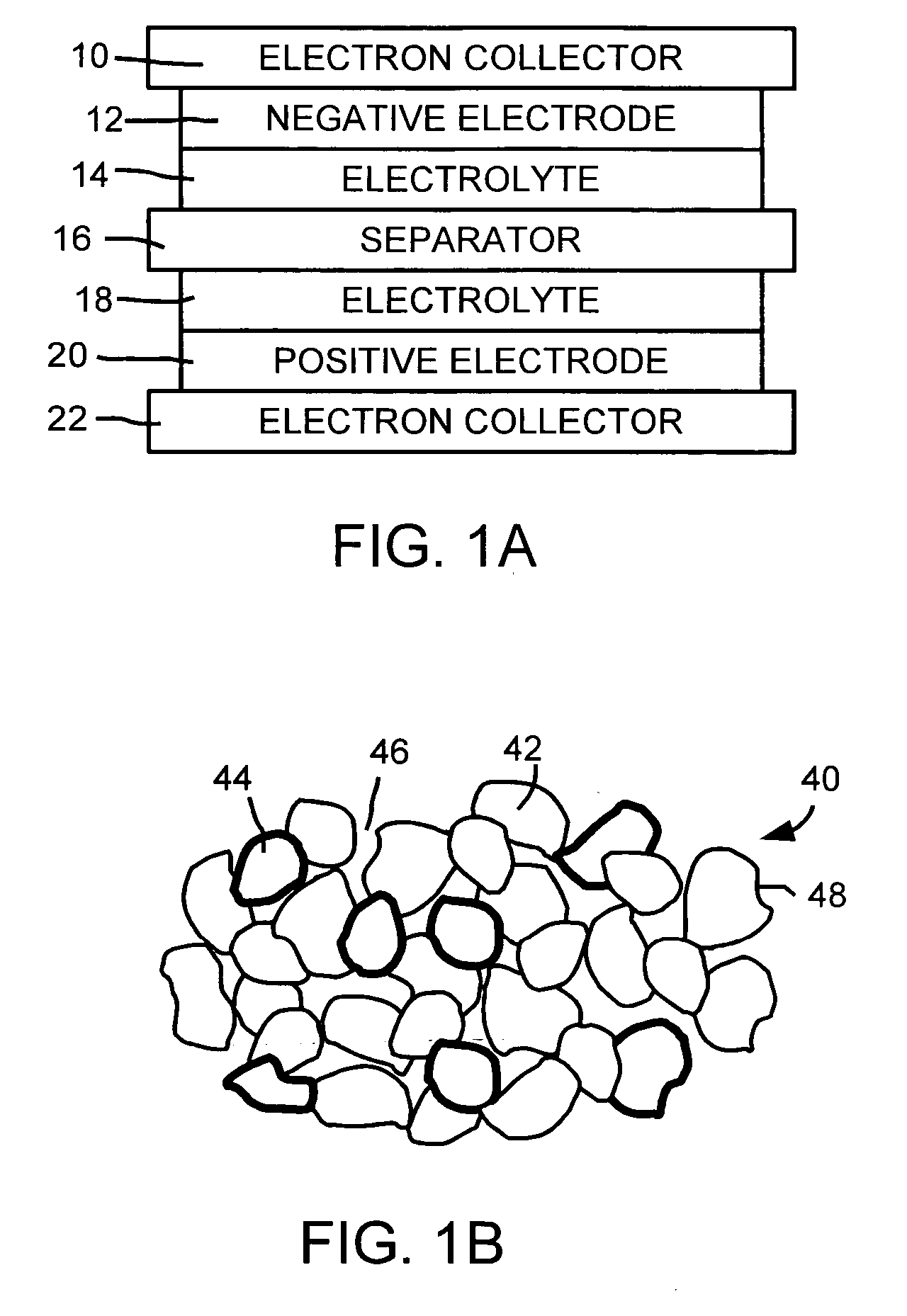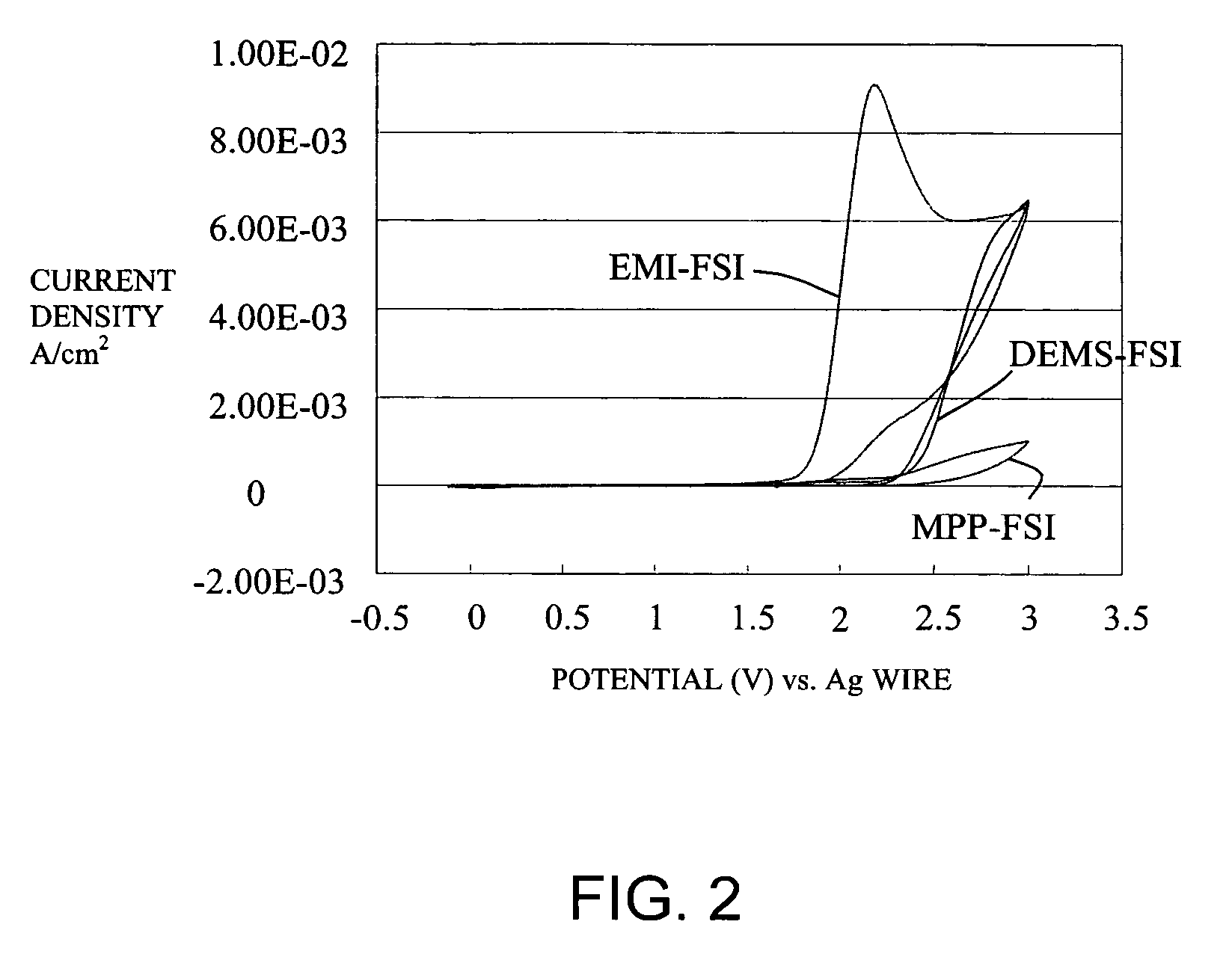Battery with molten salt electrolyte and high voltage positive active material
a technology of positive active material and molten salt, which is applied in the field of rechargeable lithium-based batteries, can solve the problems of serious restrictions on the application of molten salt-type li-ion batteries due to electrolyte decomposition
- Summary
- Abstract
- Description
- Claims
- Application Information
AI Technical Summary
Benefits of technology
Problems solved by technology
Method used
Image
Examples
example 1
[0029] A positive active material paste was prepared by dispersing 85 parts by weight of Li2NiMn3O8 and 10 parts by weight of carbon powder and 5 parts by weight of polyvinylidene fluoride in N-methylpyrrolidone, and was coated by the doctor blade method to form an active material thin film on aluminum sheet. The coating film was dried for 30 minutes in an oven at 80° C.
[0030] A negative active material paste was prepared by dispersing 85 parts by weight of Li4Ti5O12 parts by weight of carbon powder and 5 parts by weight of polyvinylidene fluoride in N-methylpyrrolidone, and was coated by the doctor blade method to form an active material thin film on aluminum sheet. The coating film was dried for 30 minutes in an oven of 80° C.
[0031] The positive electrode sheet, a micro-porous polypropylene film separator, and the negative electrode sheet were stacked, and placed in aluminum laminate pack. A certain amount of molten salt electrolyte was added in to the laminate pack. Here, DEMS-...
example 2
[0032] Methyl-propyl-pyridinium-bis-fluoro-sulfonylimide (MPP-FSI) with lithium-bis-trifluoromethan-sulfonylimide (LiTFSI) was used as the molten salt electrolyte. Other details are the same as Example 1.
PUM
 Login to View More
Login to View More Abstract
Description
Claims
Application Information
 Login to View More
Login to View More - R&D
- Intellectual Property
- Life Sciences
- Materials
- Tech Scout
- Unparalleled Data Quality
- Higher Quality Content
- 60% Fewer Hallucinations
Browse by: Latest US Patents, China's latest patents, Technical Efficacy Thesaurus, Application Domain, Technology Topic, Popular Technical Reports.
© 2025 PatSnap. All rights reserved.Legal|Privacy policy|Modern Slavery Act Transparency Statement|Sitemap|About US| Contact US: help@patsnap.com



